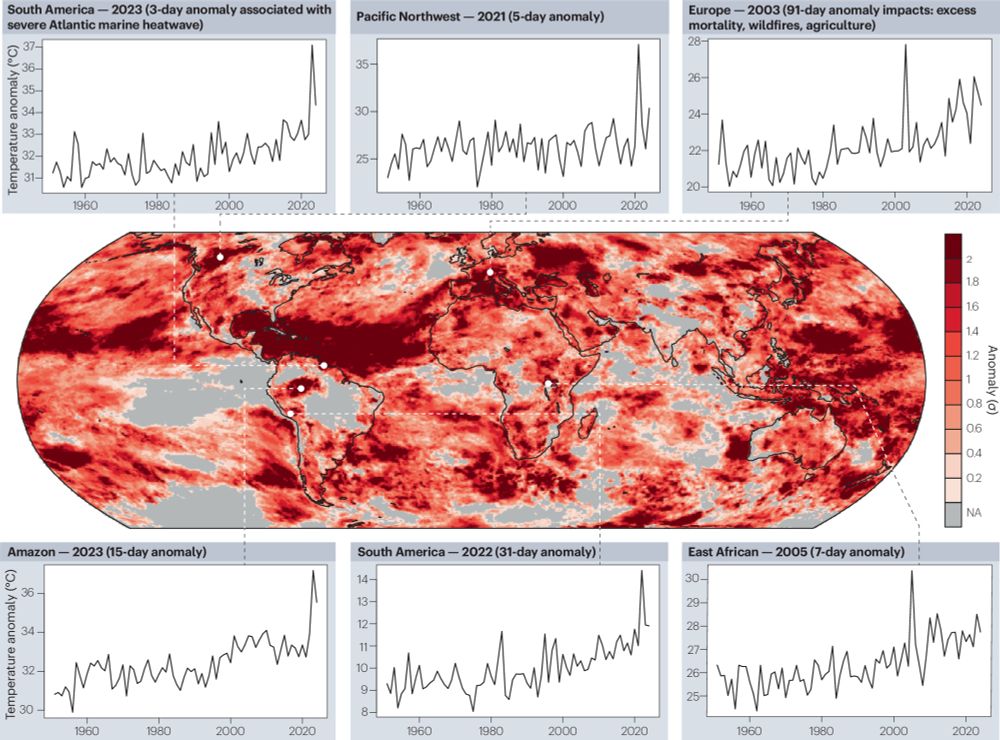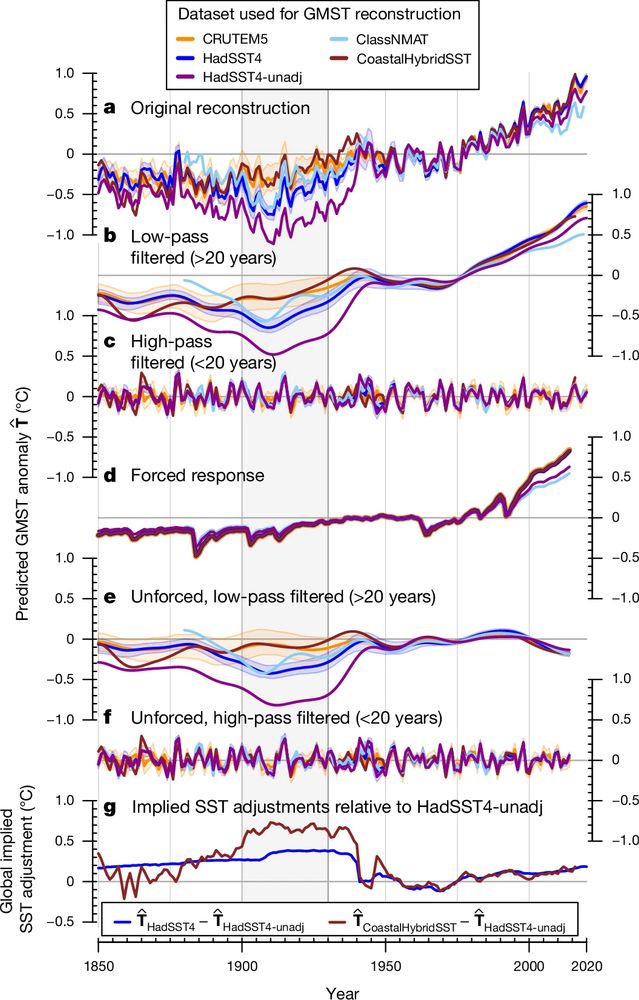Sebastian Sippel
@sebastian-sippel.bsky.social
Junior Professor for Climate Attribution at @meteoleipzig.bsky.social
Reposted by Sebastian Sippel
Hosted by @meteoleipzig.bsky.social @unileipzig.bsky.social @tropos-de.bsky.social , ECO-N research training group funded by @dfg.de
Great lectures by @sebastian-sippel.bsky.social @frediotto.bsky.social @mdebrito.bsky.social @zscheischlerjak.bsky.social and more!
Great lectures by @sebastian-sippel.bsky.social @frediotto.bsky.social @mdebrito.bsky.social @zscheischlerjak.bsky.social and more!


September 4, 2025 at 9:06 AM
Hosted by @meteoleipzig.bsky.social @unileipzig.bsky.social @tropos-de.bsky.social , ECO-N research training group funded by @dfg.de
Great lectures by @sebastian-sippel.bsky.social @frediotto.bsky.social @mdebrito.bsky.social @zscheischlerjak.bsky.social and more!
Great lectures by @sebastian-sippel.bsky.social @frediotto.bsky.social @mdebrito.bsky.social @zscheischlerjak.bsky.social and more!
Reposted by Sebastian Sippel
Find the original @natrevearthenviron.nature.com article with important contributions from co-authors Margot Bador, Raphaël Huser, Lizzie Kendon, Alexander Robinson, and @sebastian-sippel.bsky.social
rdcu.be/eqPrN
rdcu.be/eqPrN

Record-breaking extremes in a warming climate
Nature Reviews Earth & Environment - Multiple record-breaking climate events have been observed, posing socioeconomic risks. This Review outlines observed and projected changes in...
rdcu.be
June 13, 2025 at 10:40 AM
Find the original @natrevearthenviron.nature.com article with important contributions from co-authors Margot Bador, Raphaël Huser, Lizzie Kendon, Alexander Robinson, and @sebastian-sippel.bsky.social
rdcu.be/eqPrN
rdcu.be/eqPrN
5/4 p.s: The new paper by Ishii and colleagues (t.co/YeCrlimA3N) also highlights the sudden changes in NMAT (HadNMAT2 vs. CRUTEM5) around the mid-1910s in their Figure 3.
https://metsoc.jp/jmsj/EOR/2025-002.pdf
t.co
December 9, 2024 at 2:58 PM
5/4 p.s: The new paper by Ishii and colleagues (t.co/YeCrlimA3N) also highlights the sudden changes in NMAT (HadNMAT2 vs. CRUTEM5) around the mid-1910s in their Figure 3.
4/4 The year 1914 is characterised by a strong El-Nino (the uptick is seen consistently in land, SST and NMAT temperatures), the start of WWI and a sudden change in data sources (figure 2 below). Whether any of those events is responsible for the NMAT changes during this time, remains to be seen.

December 9, 2024 at 2:58 PM
4/4 The year 1914 is characterised by a strong El-Nino (the uptick is seen consistently in land, SST and NMAT temperatures), the start of WWI and a sudden change in data sources (figure 2 below). Whether any of those events is responsible for the NMAT changes during this time, remains to be seen.
3/4 So it is crucial to better understand the NMAT puzzle piece, as the evidence that comes from ClassNMAT from the perspective of the GMST reconstructions from land vs. ocean is rather split for the 1900-1930 period. It may tell us something important about the ~1900s (1900-1913) vs. 1914 onwards.
December 9, 2024 at 2:58 PM
3/4 So it is crucial to better understand the NMAT puzzle piece, as the evidence that comes from ClassNMAT from the perspective of the GMST reconstructions from land vs. ocean is rather split for the 1900-1930 period. It may tell us something important about the ~1900s (1900-1913) vs. 1914 onwards.
2/4 The result is puzzling (figure 1 below, ClassNMAT seen in panel a and b): GMST based on NMATs is indeed *very* cold in the 1900s, following the SST-based GMST time series up until 1913. Yet, from 1914 onwards, the NMAT-based reconstruction is close(r) to the LSAT-based reconstruction...

December 9, 2024 at 2:58 PM
2/4 The result is puzzling (figure 1 below, ClassNMAT seen in panel a and b): GMST based on NMATs is indeed *very* cold in the 1900s, following the SST-based GMST time series up until 1913. Yet, from 1914 onwards, the NMAT-based reconstruction is close(r) to the LSAT-based reconstruction...
1/4 Thanks for sharing your reflections! fascinating to read the more personal take behind the nice News&Views piece (www.nature.com/articles/d41...).
Just one after-thought on night marine air temperatures (NMAT). NMATs are a crucial puzzle piece, and we ran a GMST reconstruction for ClassNMAT:
Just one after-thought on night marine air temperatures (NMAT). NMATs are a crucial puzzle piece, and we ran a GMST reconstruction for ClassNMAT:

Revised historical record sharpens perspective on global warming
Undercorrection of ocean surface temperatures revealed.
www.nature.com
December 9, 2024 at 2:58 PM
1/4 Thanks for sharing your reflections! fascinating to read the more personal take behind the nice News&Views piece (www.nature.com/articles/d41...).
Just one after-thought on night marine air temperatures (NMAT). NMATs are a crucial puzzle piece, and we ran a GMST reconstruction for ClassNMAT:
Just one after-thought on night marine air temperatures (NMAT). NMATs are a crucial puzzle piece, and we ran a GMST reconstruction for ClassNMAT:
very interesting project! I'm looking forward to learn about the results...
December 5, 2024 at 10:26 AM
very interesting project! I'm looking forward to learn about the results...
interesting discussion! i've been thinking along similar lines - sea level pressure, precipitation or even sea level height measurements at the time could give very interesting constraints...
December 3, 2024 at 4:35 PM
interesting discussion! i've been thinking along similar lines - sea level pressure, precipitation or even sea level height measurements at the time could give very interesting constraints...

